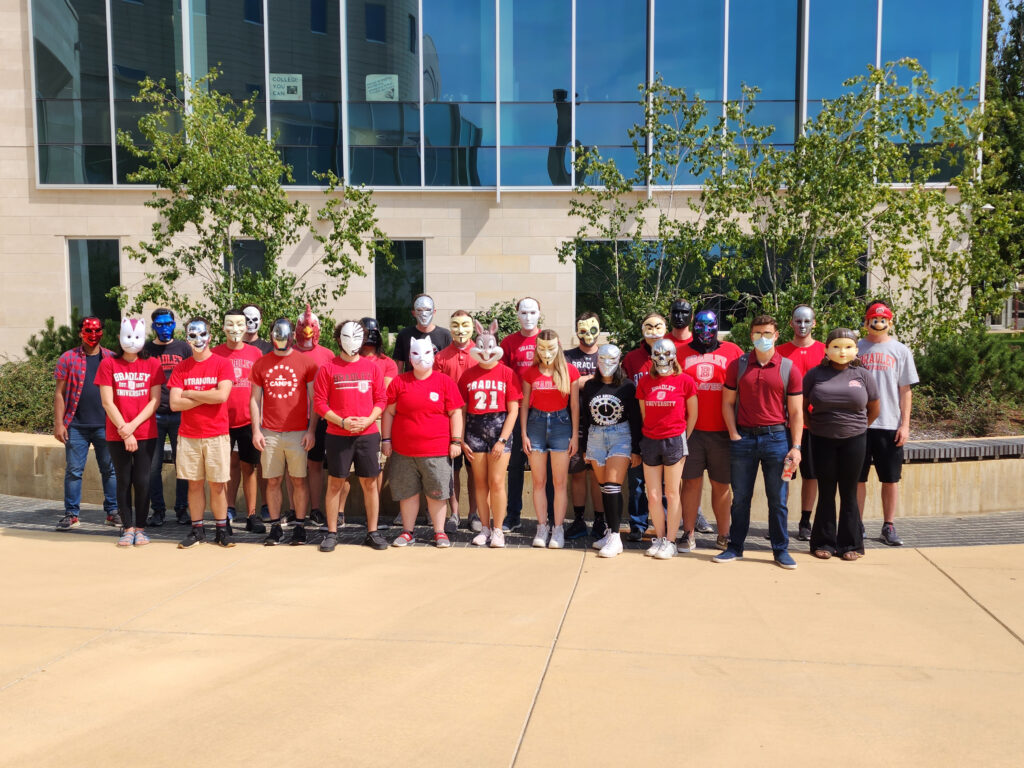Double-Blind Penetration Test
In this project, we organized and performed a successful double-blind penetration test for a client, and presented a detailed security assessment.
I facilitated efforts and communications as the Liaison for the Individual and Physical teams.
Red Team Photo


Case Study
Introduction
In an increasingly connected world, businesses are constantly faced with new security challenges. Ensuring the safety and integrity of physical and digital assets is paramount. This case study outlines a successful double-blind penetration test for a prestigious client, where I had the privilege of acting as the liaison for both the individual and physical teams.
Objective
The primary goal was to assess the client’s current security measures’ effectiveness, identify vulnerabilities, and provide actionable feedback and recommendations while strictly keeping in line with the white-hat agreement.
The Challenge
The unique challenge with a double-blind penetration test is that almost no one in the organization, except a few top executives, is aware that a test is being conducted. This scenario was chosen to gauge a real-time response from the client’s security personnel and systems.
Approach & Methodology
Initial Briefing: As part of a select group, I was briefed on the boundaries of the test to ensure all activities were ethical and within the defined scope.
Team Coordination: Our team was split into four key sub-teams: The Networking, Individual, Physical, and Corporate teams. I facilitated coordination between individual (digital research) and physical teams, ensuring synchronized efforts for a more realistic and effective simulation. Being in this position also provided me the chance to better leverage my research into on-site social engineering.
On-site Breach: Our physical team attempted to breach the client’s premises using a variety of tools and techniques such as tailgating, badge cloning, social engineering, and several more physical intrusion tools based on our client’s unique environment.
Digital Intrusion: Simultaneously, our network team worked on network discovery, mapping vulnerabilities in the client’s digital infrastructure, and contributing vital information with a variety tools, persistence, and thorough reconnaissance. The corporate team ensured we were adhering as close as possible to our outlined agreements with the client.
Data Acquisition: Once our team had gathered enough necessary information about employees, the network environment, and the on-site and surrounding buildings, we were able to launch a large scale breach that levered the focused efforts of every team. We managed to successfully breach the client’s premises at night and our teams aimed to acquire as much data as possible, simulating a real-world unauthorized intrusion, and documenting any further discovered vulnerabilities.
Feedback Collection: Post-operation, I coordinated with each of the teams to compile our vast amount of findings, ensuring no detail was overlooked. Our security assessment was nearly 100 pages long. We prepared and delivered a presentation to our clients explaining our findings with great detail.
Results & Feedback
While specific details remain confidential due to the NDA, we identified several critical vulnerabilities, both in physical premises security and in digital infrastructure. Our comprehensive report detailed:
- Points of breach and potential data leakage
- Vulnerabilities in network architecture and software
- Response time and effectiveness of the client’s security personnel and systems
- Recommendations for improving security measures and protocols
Conclusion & Next Steps
This double-blind penetration test provided the client with invaluable insights into their security posture. As a liaison, I ensured seamless communication and coordination between teams, which was pivotal to the test’s success. Additionally, I can say that I had a great time conducting this test and I learned a great deal through process and my teammates about the steps and effort involved in performing a penetration test in this manner.
Next Steps:
- Implementation of suggested security enhancements.
- Periodic re-testing to ensure continuous improvement and adaptation to evolving threats.
Skills I Honed From This Project:
- Experience in all phases of a successful live penetration test for a client
- Experience planning and executing assessment tasks
- Experience executing a successful on-site breach
- Information on networks and IT infrastructure
- Information on OSINT and Social Engineering tactics
- Experience utilizing OSINT and network reconnaissance tools
- Experience developing a full security assessment for a client
